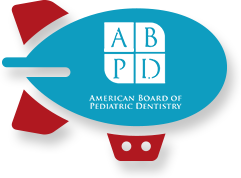Tooth-Healthy Foods for Babies Beginning Solid Diets
December 8th, 2016

As your baby begins eating solid food, it can be tough to plan a diet that’s convenient and healthy for their teeth. The market is oversaturated with choices, and just about every baby food producer can make a compelling argument for their product. However, there are certain foods that are markedly better than others, and most share one important trait: they’re whole fruits and vegetables. Below are a few of the best foods for babies just beginning to eat solids.
Bananas
Bananas are often one of the first foods that parents introduce to their children as they incorporate solids into their diet. Bananas are sweet, and full of vitamins and nutrients that make it a mouth-healthy power food. They contain Vitamin C, which helps promote healthy gums. Bananas are also high in fiber, and low in sodium, cholesterol and saturated fat. Bananas do contain sugar, though, so be sure to wipe your baby’s mouth clean and give them plenty of water after they eat one.
Sweet potatoes
Sweet potatoes are dental super foods that can be easily added to a baby’s diet. This fantastic root vegetable contains a high amount of Vitamin A, which promotes healthy teeth and gums. Vitamin A helps maintain the mucous membrane and soft tissue in gums, and also promotes the formation of tooth enamel by helping the body produce keratin – a protein vital to producing tooth enamel. We suggest peeling and boiling sweet potatoes and making them into a soft mash for your child to easily eat.
Avocados
Did you know that Avocados are technically a single-seed berry? Avocados are nutrient-dense fruits that provide a lot of mouth-healthy benefits. They’re packed with B Vitamins, which helps prevent gum disease. They contain Vitamin C, which boosts overall gum health, and they contain folate, which helps repair mouths damaged by gum disease. Because of their soft consistency, Avocados are easy for babies to eat. We suggest spooning out the flesh of the avocado, and mashing it up to make it easy for your child to eat. Avocados are a great healthy snack for hungry babies!
Winter Squash
Winter Squash refers to a family of squash which includes Butternut, Acorn, Spaghetti, and Calabaza Squash. The Winter Squash family contains a lot of vitamins and minerals that promote oral health. Each type of squash is high in calcium, which strengthens teeth and helps fight gum disease. Winter Squash also contains Vitamin C, which boosts overall gum health. To serve Winter Squash, we suggest cutting into half, removing the seeds, and baking until soft. Then, blend the squash so that your bay can easily eat it.
Visit our Office
The American Academy of Pediatric Dentistry advises parents to establish a dental home for their children before their first birthday. Usually, a child’s first tooth will appear between 6 and 10 months of age, which makes it the perfect time to establish a dental home. As pediatric dentists, we specialize in caring for children and making them feel comfortable in our office. This helps them create a positive association with the dentist, which can ward off future anxiety when visiting our office. Schedule an appointment today, and take the first step to earning your child a healthy smile that grows with them.







 New Flossing Routine
New Flossing Routine






